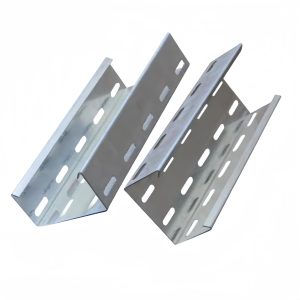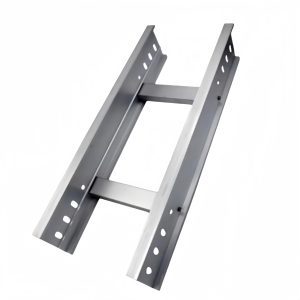Cable trays and conduits are both essential components of electrical installation systems, but they serve different purposes and have distinct characteristics. Understanding their differences can help in choosing the most appropriate system for specific applications. In this article, we will delve into the details of cable trays and conduits, exploring their definitions, uses, advantages, and disadvantages.

Cable Tray Systems
A cable tray is an open, rigid structure made from various materials such as steel, aluminum, or fiberglass, designed to support and organize cables, wires, and other electrical components. Cable trays are typically used in commercial, industrial, and institutional settings where there is a high density of cables and a need for easy access and maintenance.
Key Features of Cable Trays
1. Open Structure:Cable trays have an open design that allows for easy inspection, maintenance, and modification of the cabling system.
2. Flexibility:They can be easily modified by adding or removing cables without the need for complete system shutdowns.
3. Support and Organization: Cable trays provide physical support to cables, preventing damage and ensuring proper cable management.
4. Cooling: The open design facilitates air circulation, which helps in cooling cables and reducing the risk of overheating.
5. Cost-Effective: Installation costs are generally lower compared to conduit systems due to less labor-intensive installation processes.
Applications of Cable Trays
Cable trays are commonly used in data centers, power plants, industrial facilities, hospitals, and commercial buildings where large volumes of cables need to be managed efficiently. They are ideal for environments with high cable densities and frequent changes in the cable layout.
Advantages of Cable Trays
Ease of Access: Cables can be added, removed, or modified quickly and easily.
Space Efficiency: They occupy less space than conduit systems, making them suitable for areas with limited space.
Cost-Effective: Lower installation and maintenance costs.
Scalability: They can be expanded easily to accommodate additional cables.
Disadvantages of Cable Trays
Limited Protection: Cable trays offer less protection against environmental factors like moisture, dust, and mechanical damage compared to conduits.
Security: Cables are more exposed, potentially making them vulnerable to tampering and theft.
Conduit Systems
A conduit, on the other hand, is a closed, tubular structure used to protect and route electrical cables and wires. Conduits can be made from materials such as metal (steel, aluminum), plastic (PVC, HDPE), or concrete. They are primarily used in environments where cables need extra protection from physical damage, environmental elements, and security concerns.

Key Features of Conduits
1. Closed Structure: Conduits fully enclose cables, providing protection against external elements and physical damage.
2. Durability: They are designed to withstand harsh conditions and resist corrosion, impact, and abrasion.
3. Protection: Conduits shield cables from water, chemicals, and other environmental hazards.
4. Security: They prevent unauthorized access to cables, enhancing security.
Applications of Conduits
Conduits are widely used in construction sites, outdoor installations, industrial settings, and areas prone to vandalism or theft. They are also preferred in environments with high moisture, dust, or corrosive substances.
Advantages of Conduits
High Protection: Provides excellent protection against environmental factors and physical damage.
Longevity: Durable materials ensure a longer lifespan.
Security:Reduces the risk of cable theft and tampering.
Disadvantages of Conduits
Installation Cost: Conduit installation can be more expensive due to the complexity and labor involved.
Maintenance: Modifying or accessing cables within a conduit requires more effort and time.
Space Consumption: Conduits can take up more space than cable trays, especially in tight spaces.
In conclusion, the choice between cable trays and conduits depends on several factors including the environment, the level of protection required, the frequency of modifications, and budget constraints. Cable trays are best suited for indoor applications where ease of access and cost-effectiveness are priorities, while conduits are ideal for outdoor and harsh environments where cables require maximum protection.

